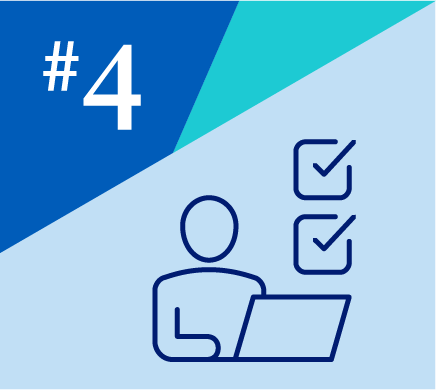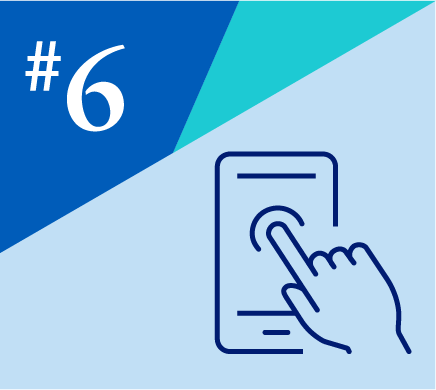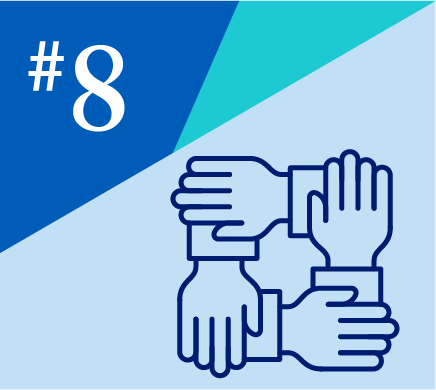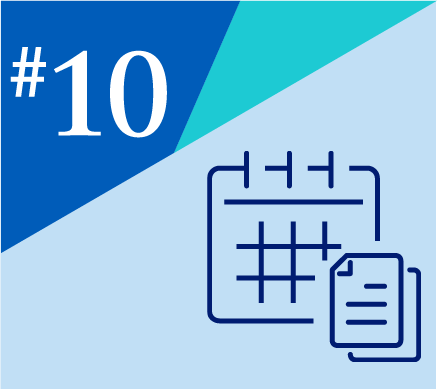

Archived Insight | March 1, 2022
You’ve invested heavily in attracting qualified talent and spent countless hours making sure they’re the right fit. All that’s left is to formally bring them into the organization. Easy, right?
Well actually, no.
The pandemic has made onboarding new talent challenging, especially when it comes to remote and hybrid employees. In fact, one in three new employees quits within the first six months, costing organizations six to nine months’ salary. A shoddy onboarding experience can irreversibly taint a new hire’s opinion of her new employer and increase the chances of her walking out the door.

Share this page
Well before the employee’s first day, create a role-based onboarding team that includes the people necessary to effectively onboard the new person. This typically includes the hiring manager, HR, facilities, IT, legal and finance. It should be clear to each member of that team what their expected tasks and deadlines are as well as what their role requires.
Take advantage of workflow programs that facilitate the onboarding experience for both employer and employee. This is where technology can play a vital role. Technology-based onboarding tools help ensure tasks are assigned and completed, automate reminders, keep the onboarding team (and new hire) informed, coordinate calendars, make appointments, and initiate project management of the onboarding process. These tools don’t need to be expensive and can facilitate the conversation between managers and operations while completing important tasks behind the scenes.

An easy way to make a new hire feel welcome is to begin communications early — even before the start date. For instance, have the manager and a few team members reach out to the new hire in advance of their start date to welcome them to the team. Team members can use a brief email or text (perhaps based on a template you provide). Some organizations send logo-laden swag, office supplies, uniforms and other loyalty-building items along with a welcome note.
The best way to set up a new hire for success is through thoughtful preparation. Some organizations have managers schedule a pre-start date call to answer questions and provide reminders of documents (e.g., proof of citizenship/residency) or requirements (e.g., drug tests, security clearance) needed before day one. The facilities onboarding team member will also need to give the new hire access to buildings, vehicles, office space, garages, and other physical locations relevant to the person’s job. The IT member of the onboarding team will need to ensure the new hire has the proper level of access controls to enter certain websites and document management systems.

Make sure the new employee has the necessary tools to hit the ground running on day one — such as laptops, access keys, uniforms, phone and important contacts. Implement a system that makes it possible for the new hire to select workplace preferences and/or make equipment and accommodations requests in advance of their start date.
Make sure key documentation and training materials are easily accessible in several formats. Don’t assume that new employees will be familiar with your technology tools (e.g., shared files, Slack, Outlook, Asana). Provide employees access to relevant organizational materials such as the employee handbook, code of conduct, employee benefit materials and other important company policies. In addition, some organizations have work teams create a “How We Do Things” document that can be shared with all new employees. This can be an informal guide that covers common questions new employees might have about workplace protocols, such as:

Give the new hire a first-week roadmap that includes a list of tasks, scheduled meetings, and trainings, followed by a 30/60/90-day onboarding plan. The roadmap should include one-on-one meetings with team members and other key individuals that they might work with on a regular basis.
Assign work team members a topic to review with or teach the new hire. For example, “Sasha will teach you how to use Microsoft Teams and Germain will walk you through our timekeeping system.” If your organization includes most topics through a formal training program, team members may still be helpful resources for follow-up questions. Some organizations also assign a “mentor” or “navigator” to each new employee to serve as a resource for questions.

If you’re welcoming a group of new hires into the organization around the same time, consider making them a “class” that’s onboarded together. This group approach can help create camaraderie among individuals who might not otherwise meet across the organization, giving them an outlet to ask “dumb” questions with peers and further encouraging a work community. This class can be in person or virtual, depending on the situation.
Employers often forget that it can take a new hire a long time to get their sea legs. While the formal onboarding process may end after a few weeks, it’s a good idea to check in with new hires periodically during their first year. These meetings can help identify gaps or address concerns that may arise after the formal onboarding process is over. This is also a great opportunity to give the new hire a survey of their onboarding experience, where they can make suggestions for improving the program for the next class of “undergrads.”

Adopting a blend of tried-and-true best practices and modern technology will greatly increase your odds of retaining talent, improve employee engagement and satisfaction, and raise productivity — all while saving time and money.

Technology, Organizational Effectiveness, Communications, Multiemployer Plans, Public Sector, Healthcare Industry, Higher Education, Architecture Engineering & Construction, Benefits Technology, Corporate, Consulting Innovation

Organizational Effectiveness, Technology, Multiemployer Plans, Public Sector, Healthcare Industry, Higher Education, ATC, Corporate, Health, Architecture Engineering & Construction

Health, Organizational Effectiveness, Multiemployer Plans, Public Sector, Healthcare Industry, Higher Education, Architecture Engineering & Construction, Consulting Innovation, Corporate, Pharmaceutical
This page is for informational purposes only and does not constitute legal, tax or investment advice. You are encouraged to discuss the issues raised here with your legal, tax and other advisors before determining how the issues apply to your specific situations.
© 2025 by The Segal Group, Inc.Terms & Conditions Privacy Policy Style Guide California Residents Sitemap Disclosure of Compensation Required Notices